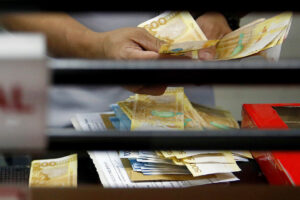CASH remittances surged in July as overseas Filipino workers (OFWs) sent more money to their families amid higher inflation and borrowing costs.
This was the highest since December when remittances are usually elevated as OFWs send more money to their families before the holidays, data from the Bangko Sentral ng Pilipinas (BSP) on Friday showed.
Remittances sent through banks increased by 2.6% to $2.99 billion in July, from $2.92 billion a year earlier.
The pace of cash remittance growth was also the fastest in two months or since 2.8% in May.
“The expansion in cash remittances in July 2023 was due to the growth in receipts from land- and sea-based workers,” the central bank said in a statement.
Remittances from land-based workers jumped by 2.7% year on year to $2.43 billion, while those from sea-based workers went up by 1.9% to $560 million.
OFWs likely sent more money back to the Philippines to help their families cope with still-elevated inflation and high-interest rates for debt payments, said Rizal Commercial Banking Corp. Chief Economist Michael L. Ricafort in a Viber message.
Headline inflation slowed to 4.7% in July from 5.4% in June. It still marked the 16th consecutive month during which it surpassed the 2-4% target range of the BSP.
The BSP has maintained its key policy rate at a near-16-year high of 6.25% at its July meeting. The central bank has increased benchmark interest rates by 425 basis points (bps) from May 2022 to March 2023.
“The unusually higher OFW remittances in July 2023…may be largely attributed to some tuition payments and other related spending in preparation for the start of the new school year, as these education-related spending are considered compulsory in nature for many OFW families,” Mr. Ricafort said.
Most schools started the school year on Aug. 28. Student registration usually takes place a month before the next academic year starts.
However, the growth in remittances may have been offset by the stronger peso against the dollar in July, Mr. Ricafort said, adding that remittances from OFWs have a higher peso equivalent for every dollar sent.
The peso closed at P54.88 on July 31, strengthening by 0.58% or 32 centavos from its P55.2 finish on June 30.
In the first seven months, cash remittances increased by 2.9% to $18.79 billion from a year ago.
By country source, the United States remained the biggest source of cash remittances at 41.3%. It was followed by Singapore (6.9%), Saudi Arabia (5.9%), Japan (5%), and the United Kingdom (4.8%).
BSP data also showed that personal remittances increased by 2.5% to $3.32 billion in July from $3.24 billion in the same month last year. This brought the seven-month tally to $20.91 billion, up 2.9% from a year ago.
For the coming months, Mr. Ricafort said migrant Filipinos may continue to support their families in the Philippines at a similar pace as inflationary pressures remain.
Remittances could also accelerate in the fourth quarter during the holiday season, which is a consistent pattern seen for many decades, he said.
“Offsetting risk factors include higher inflation/cost of living for OFWs themselves in host countries where they are based that could lead to more expenses in foreign countries and could potentially reduce any remittances sent back home,” he added.
The BSP expects remittances to grow by 3% this year. – Keisha B. Ta-asan
